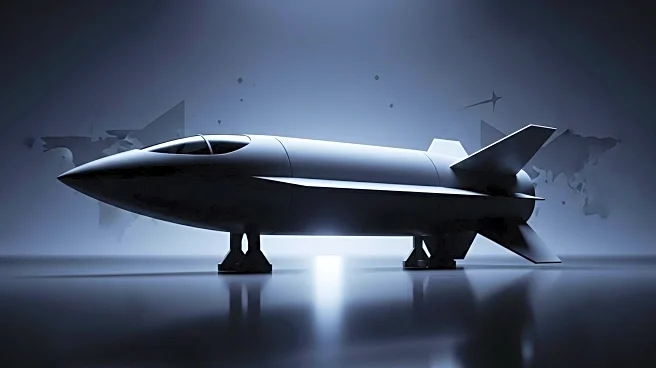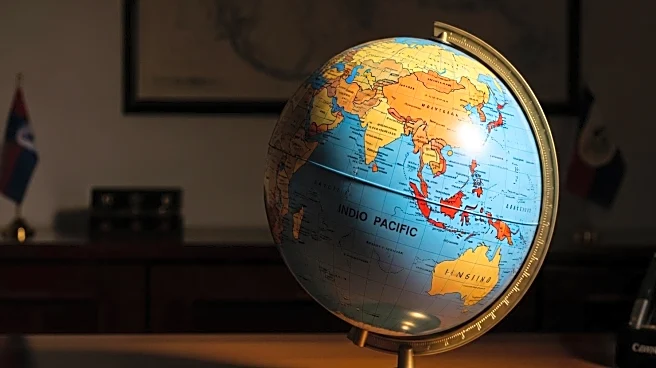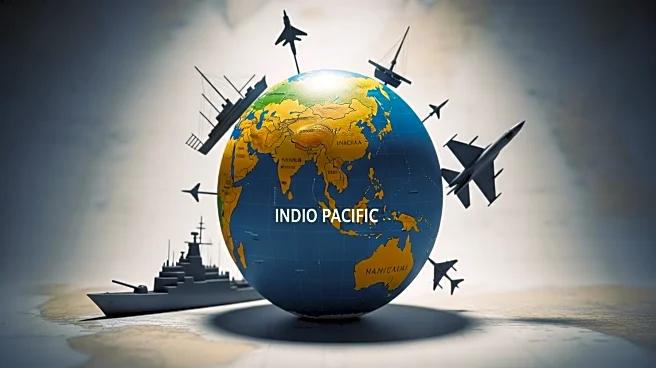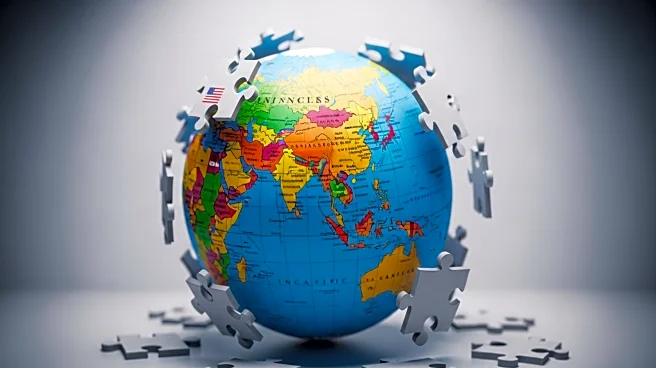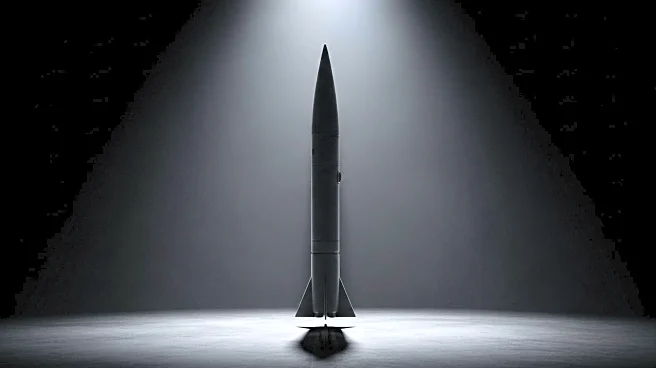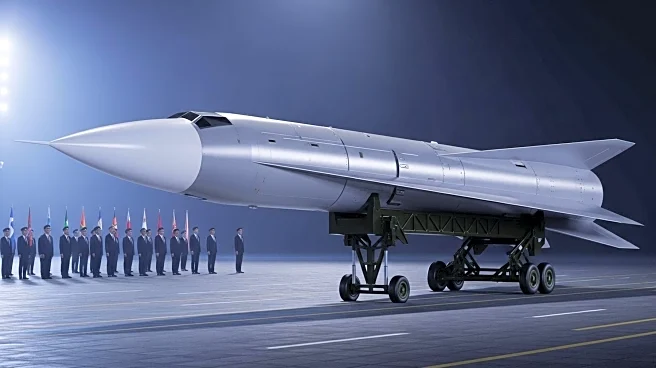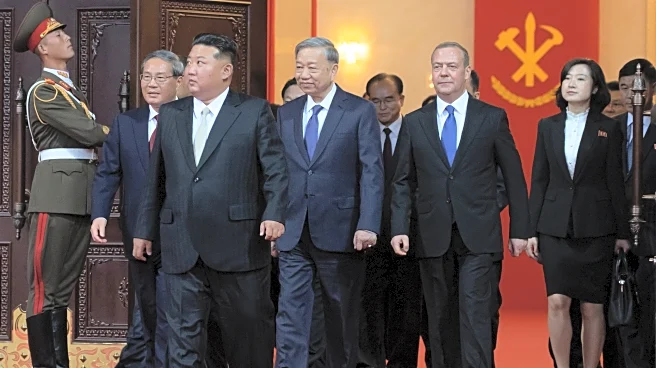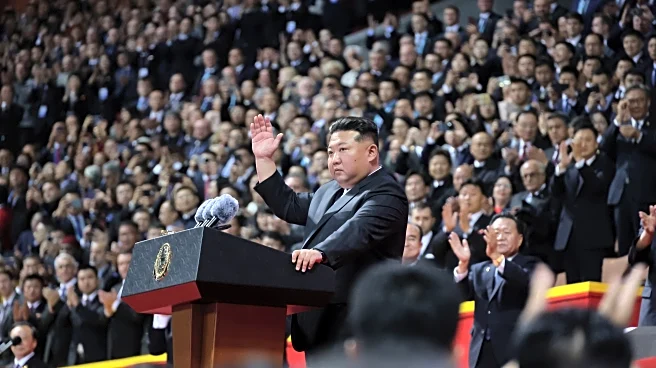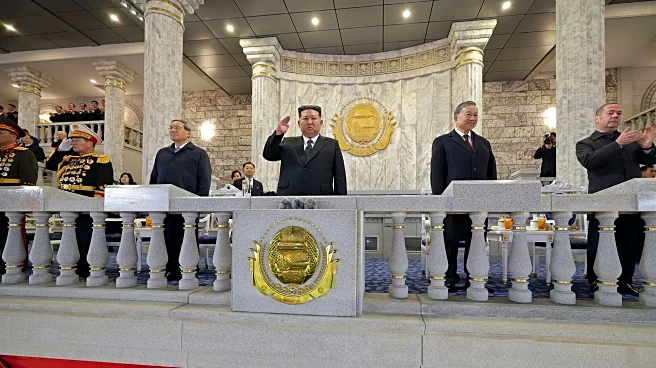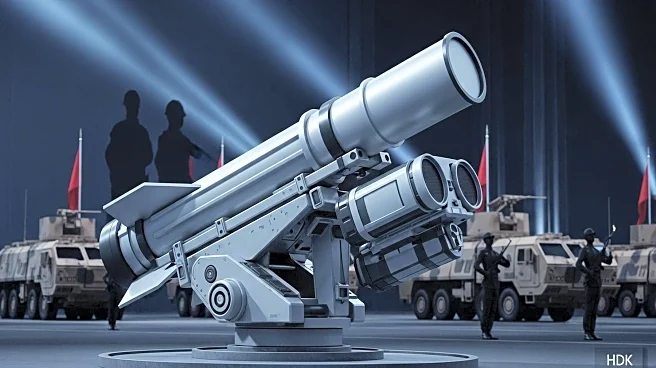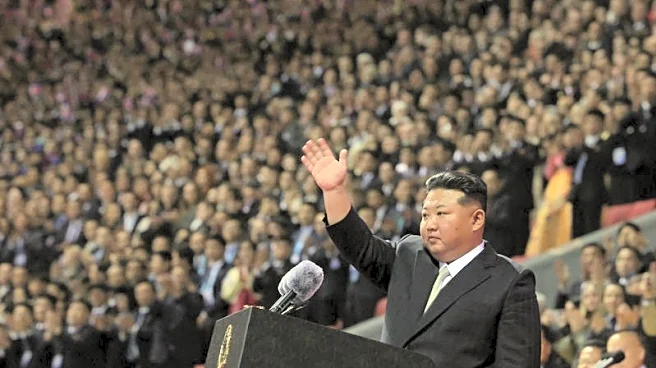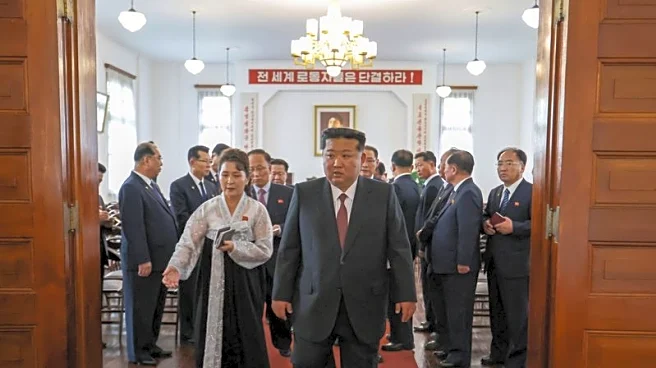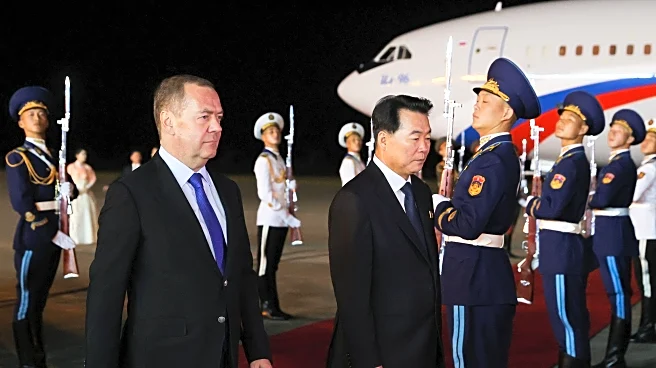What is the story about?
What's Happening?
North Korea has unveiled its 'most powerful' intercontinental ballistic missile (ICBM), the Hwasong-20, during a military parade in Pyongyang. The event, overseen by leader Kim Jong Un, showcased advanced weaponry, including long-range strategic cruise missiles. The Hwasong-20 is described as North Korea's 'most powerful nuclear strategic weapon system,' capable of targeting the U.S. mainland. The parade marked the 80th anniversary of the ruling Workers' Party and highlighted North Korea's alignment with China and Russia.
Why It's Important?
The unveiling of the Hwasong-20 underscores North Korea's commitment to expanding its nuclear capabilities amid ongoing tensions with the United States and South Korea. This development could further strain diplomatic relations and increase regional security concerns. The missile's potential to carry multiple nuclear warheads poses a significant challenge to existing U.S. missile defense systems, potentially altering the strategic balance in the region.
What's Next?
Analysts predict that North Korea may conduct another ICBM test by the end of the year, which could provoke international condemnation and lead to further sanctions. The U.S. and South Korea may need to reassess their defense strategies and diplomatic approaches to address the growing threat. There may also be increased efforts to engage North Korea in dialogue to prevent escalation.
Beyond the Headlines
North Korea's military advancements are part of a broader strategy to assert its position as a nuclear power and resist Western influence. The country's alignment with China and Russia suggests a shift in geopolitical alliances that could impact global power dynamics. The presence of foreign dignitaries at the parade indicates North Korea's desire to strengthen ties with countries that support its military ambitions.
AI Generated Content
Do you find this article useful?
